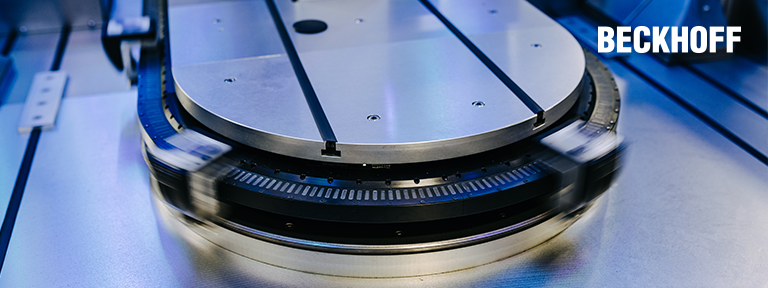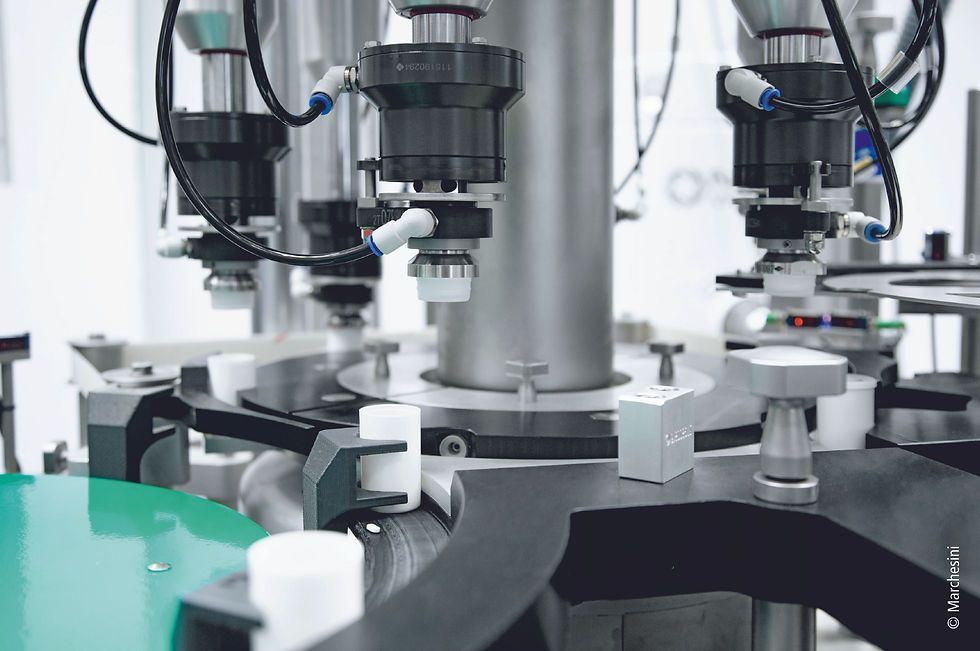Motion Control Has Changed Forever: How XTS Transformed Machine Design Across Industries
- Jeff Johnson

- Sep 15
- 5 min read
Since the technology’s launch in 2012, the intelligent transport system has fundamentally changed mechanical engineering and machine design with revolutionary mechatronics

For decades, the flow of products through machines followed a predictable path: fixed conveyors, mechanical star wheels, cam-driven linkages. These systems did the job, but they also imposed limits—on flexibility, on throughput, on how fast manufacturers could adapt to new products or processes. In an era ruled by mass customization and rapid innovation at every level, those limits have become liabilities.
That’s where Beckhoff’s XTS enters the game. More than a conveyor, more than a servo system, XTS is a reimagining of what it means to move products through a machine. And XTS doesn’t just complement the Beckhoff product portfolio—it amplifies it, becoming a cornerstone for a new generation of adaptive automation. It does this by incorporating dynamic servomotor and drive technology, PC-based control, and EtherCAT networking to the fullest effect.
From mechanical to software-defined motion control
At its core, XTS elevates motion control to become an enabler of adaptive automation solutions. Each mover on the track becomes an independently controlled axis, free to accelerate, decelerate, group, buffer, or bypass as needed. Instead of designing around the limitations of conveyors and other mechanical components, machine builders can now design around the end product itself and leave what’s left behind.
This shift in thinking unlocks a simple but profound idea: format changes handled in software, not hardware. Whether switching between bottle sizes in a beverage line, different blister pack formats in pharmaceuticals, or varying cell types in battery production, the same hardware adapts on the fly with no mechanical retooling. That kind of agility is no longer a nice-to-have—it’s become the difference between keeping pace with market demands and falling behind to the competition.

Compact machines offer big time capabilities
XTS also upends the equation of machine footprint versus throughput. Traditional designs often required long conveyor runs, buffer zones, or duplicate stations to meet productivity targets at the expense of plant floorspace. With movers that can accelerate and position independently to duplicate processes or buffer on the same track, XTS handles those requirements in a much smaller space.
The result? XTS-equipped machines are up to 30–50% more compact while offering higher throughput and greater product diversity. For an electronics manufacturer, that can mean more assembly lines on the same amount of factory floor. For a food producer, it means packaging multiple SKUs on one line instead of three. In both cases, the impact on ROI and time-to-market is significant.
Cross-industry transformations
The versatility of XTS is perhaps best illustrated by its adoption across industries:
Assembly demands gentle yet precise handling of intricate components. XTS provides smooth, vibration-free motion and the ability to synchronize movers with robotic arms or vision systems—perfect for smartphones, battery cells, or medical devices.
Food and beverage operations must manage rapid changeovers and rigorous hygiene requirements. XTS Hygienic, with its IP69K-rated stainless steel design, is purpose-built for washdown environments while retaining the system’s core flexibility and performance.
Intralogistics operations with material handling requirements that exceed the capabilities of traditional conveyors and sortation systems can lean on XTS to handle microfulfillment and other complex applications.
Packaging companies constantly innovate in different package formats—stand-up pouches, blister packs, multipack cases, portioned trays—and XTS enables rapid adaptation without extensive machine downtime for mechanical changeovers.
Pharmaceutical production requires traceability and strict compliance. With movers that can carry sensors (through No Cable Technology), each dose, vial, or package can be tracked throughout its journey from formula to pharmacy.
These examples highlight a consistent theme: XTS doesn’t just solve today’s problems; it equips manufacturers to adapt and address tomorrow’s challenges with confidence.
From intelligent transport to multi-robot tech: The new frontier
One of the most exciting advances in XTS is No Cable Technology (NCT). By delivering contact-free power and real-time data directly to movers, NCT transforms them into mobile workstations. Attaching powered end effectors to XTS NCT movers transforms linear transport technology into a low-profile multi-robot system. Imagine a mover that not only transports a product but also rotates it for inspection, applies a process like curing or heating, or communicates quality data back to the control system—all while in motion. These mobile workstations move around the XTS track freely rather than being fixed in one spot like most robot cells used in production lines.
This convergence of intelligent transport and robotic functionality blurs the line between machine modules. Instead of discrete stations linked by conveyors, the machine itself becomes a distributed, adaptive system where every XTS mover acts independently. It’s a shift as dramatic as the move from solid state relays to PLCs—and one that opens entirely new possibilities in mechanical and electrical engineering for machine builders, system integrators, and end users.
XTS leverages the power of the Beckhoff ecosystem
The XTS does not stand alone. Its impact is amplified because of its part in a broader technology ecosystem built on PC-based control, EtherCAT, and TwinCAT automation software. The synergy here is critical:

EtherCAT ensures real-time communication not just between movers, but across the entire automation architecture—robots, vision systems, drives, sensors, and cloud-based platforms.
TwinCAT provides a universal engineering environment for everything in automation: mechatronics, machine control, robotics, safety, HMI, simulation, and more. So machine builders can model the behavior of XTS in any application concept, optimize it virtually, and reuse software modules across projects.
Industrial PCs scale from compact controllers to high-performance many-core platforms, ensuring that even complex systems with hundreds of movers, robots, and integrated machine vision run seamlessly on one IPC.
This unified ecosystem reduces engineering effort, improves performance, speeds commissioning, and future-proofs machine designs. For OEMs and end users alike, that translates into faster innovation cycles and lower total cost of ownership.
Permanent paradigm shift in machine design
The promise of XTS goes beyond higher throughput and smaller footprints—it’s the ability to rethink how machines are designed from the ground up. No longer bound by traditional mechanical engineering logic, designers can explore architectures that are more modular, reconfigurable, and inherently adaptive. One linear transport system can replace hundreds of traditional mechanical components. One XTS-equipped machine can take the place of five. One mechatronic platform can serve multiple industries. One design can evolve and adapt as products and markets change.
In this light, XTS isn’t simply an intelligent transport system. It’s a platform for transformation, enabling the next era of smart manufacturing where flexibility, efficiency, and connectivity in mechatronics drive real world success.
Future-ready adaptive manufacturing starts here
Whether in the precise assembly of electronics, the high-speed world of packaging, the hygiene-critical environments of food and pharma, or the rapidly evolving landscape of battery production, XTS has proven itself as a catalyst for innovation in mission critical applications. When paired with the rest of Beckhoff’s automation ecosystem, it empowers machine builders and manufacturers to break free from age-old mechanical constraints and design systems that are as agile as the markets they serve.
In a world where change revolves constantly, the ability to adapt quickly is the ultimate competitive edge. With XTS, that edge is built into every motion sequence on your machine.
Ready to join the XTS revolution like other innovative machine builders and manufacturers? Connect with your local Beckhoff sales engineer to get started today

Jeff Johnson is the Mechatronics Product Manager at Beckhoff Automation











Comments